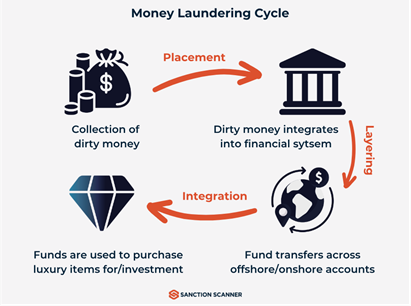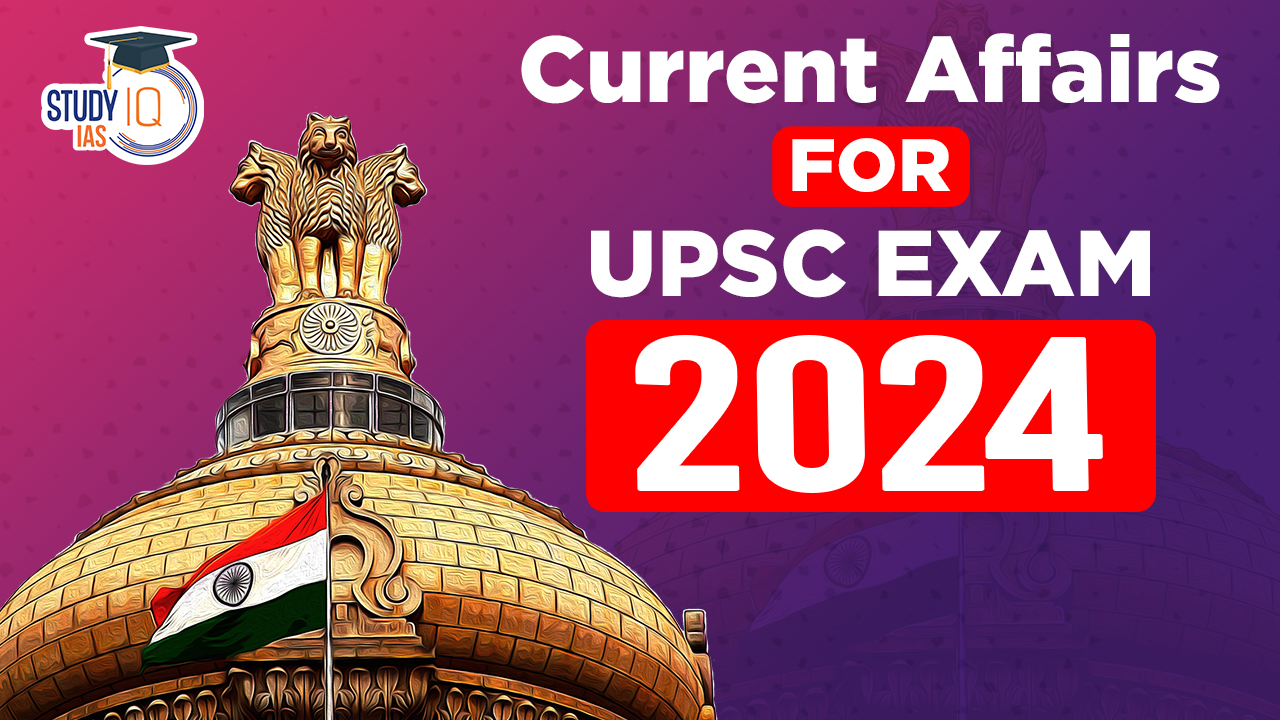Table of Contents
Predicate Offense
Context: The Supreme Court has asked the Directorate of Enforcement to first establish the predicate offence before the commencement of trial in the money laundering case against former Tamil Nadu Minister V. Senthil Balaji.
About Predicate Offense
- A predicate offence is a crime that forms part of a broader criminal activity, often linked to money laundering or organised crime.
- This term is usually used to describe terrorist financing activities.
- A predicate offence is a crime that is a component of a more serious crime.
- g. Producing unlawful funds is the primary offence, and money laundering is the predicate offence.

Reaching $30 trillion Economy
India achieved a 7%-plus GDP growth rate and is the fastest-growing large economy.
More in News
- The government envisions India becoming a $30-trillion economy by 2047.
- Other countries have stood at a similar juncture and failed to become developed nations.
- For India to become a $ 30 trillion economy by 2047, it is essential to pursue rapid economic growth with liberal policies and private sector involvement.
Potential For India’s Growth
- Economic Growth for Poverty Alleviation: From Independence till 1991, India’s poverty rate was around 50%.
- Post-liberalization (1991-2011), the poverty rate fell to about 20%, pulling 35 crore people out of poverty.
- Working-Age Population: India has a working-age population of 950 million, with only half currently employed.
- Harnessing this demographic could significantly boost economic growth.
- Export-Oriented Manufacturing: Low-skilled, employment-intensive manufacturing with a focus on exports can emulate the success of South Korea, Taiwan, Japan, and Vietnam.
- These countries achieved double-digit growth between 1960-1990 through rapid export-oriented industrialization.
- Leveraging Global Manufacturing Trends: India has the opportunity to attract global manufacturers through the China+1 strategy, reducing dependence on China.
What are the Challenges?
- Agriculture Sector: 46% of India’s labour force is in agriculture, contributing only 18% of GDP.
- This sector is characterised by low productivity and underemployment.
- Female Labor Force Participation Rate (FLFPR): India’s FLFPR is 37%, significantly lower than China, Vietnam, and Japan (60%-70%).
- Post-COVID-19, the rate increased as women returned to work in agriculture, but this masks underlying issues.
- Middle-Income Trap: Of 101 middle-income economies in 1960, only 23 became high-income by 2018.
- India needs to avoid losing its edge in lower-end sectors and becoming uncompetitive in high-tech sectors.
- Import Tariffs and Manufacturing Competitiveness: High tariffs on imports could protect industries from competition but risk creating inefficient manufacturers.
- Example: Tariffs on mobile phone components could raise prices and harm export competitiveness.
Way forward
- Pursue Liberal Economic Policies: Focus on policies that support private sector growth and entrepreneurship.
- Develop Low-Skilled Manufacturing: Encourage sectors like electronics assembly and apparel to create jobs and boost exports.
- Example: South Korea and Taiwan’s success through export-oriented manufacturing.
- Build Industrial Clusters: Develop clusters with plug-and-play infrastructure, similar to China and Vietnam.
- Address cost disabilities in power, logistics, financing, and labour productivity.
- Enhance Female Labor Force Participation: Implement policies to increase FLFPR to levels seen in other rapidly growing economies.
- Avoid Protectionist Policies: Resist high import tariffs to prevent inefficiencies and maintain competitiveness in exports.
- Example: Impact of tariffs on mobile phone manufacturing.
- Minimum Government, Maximum Governance: Reduce bureaucratic red tape and improve ease of doing business to encourage private investment.
Google A Monopolist, Rules American Judge In Key Anti-Trust Case
Context: A US judge ruled that Google violated antitrust laws by spending billions to create an illegal monopoly as the world’s default search engine.
More in News
- This is a significant win for federal authorities challenging Big Tech’s market dominance.
- Google was found to have monopoly power in online search and search text ads.
- The court ruled that Google violated antitrust laws by maintaining its monopoly through exclusive distribution agreements.
- The case follows a precedent set by the 2004 settlement between Microsoft and the Justice Department over Internet Explorer.
| What is Meant by Antitrust Laws? |
| Antitrust laws are regulations established by governments to promote fair competition for the benefit of consumers. These laws aim to prevent monopolies, cartels, and other practices that reduce or eliminate competition in the marketplace. |
Background
The Alliance of Digital India Foundation (ADIF), representing the startup ecosystem and app developers, filed a complaint with the Competition Commission of India (CCI) against Google for alleged anti-competitive practices in online advertising.
Key Allegations
- Dominant Position and Abusive Behaviour: Google’s control over major online platforms.
- Deriving 97% of its revenue from advertising, leading to practices that stifle competition and adversely affect Indian businesses.
- Unfair Conditions in Online Search Advertising: Imposition of Unfair Conditions through Ad Policies.
- Restrictions on call assets.
- Prohibitions on third-party technical support.
- Opacity in Ad Ranking System: Described as a “black-box approach” that leaves advertisers unclear about the services they are paying for.
- Trademark Usage in Keyword Bidding: Google allows competitors to bid on trademarked keywords, leading to bidding wars that inflate advertisement prices artificially.
- Practices Regarding YouTube Ad Inventory: Restricts advertisers’ choices by linking access to YouTube ad inventory with the use of Google’s Display and Video 360 platform.
- Forces advertisers to use only Google’s tools.
Context of the Complaint
- Google’s Billing Policy Dispute:
- In March, Google banned around 200 apps from 10 developers from its Play Store for non-compliance with its User Choice Billing (UCB) system.
- The apps were reinstated with in-app billing after a four-month extension in the payment of pending fees related to Play Store services.
- Revenue Share Concerns:
- App developers expressed concern over Google’s arbitrary revenue share.
- Allegations that Google uses its dominant position to charge exorbitant commissions of 15-30% for its services.
- Previous Legal Actions:
- Several Indian startups filed pleas against Google’s billing policy in the Madras High Court.
- The issue was later escalated to the apex court.
Key Findings
- Search Market Dominance:
- Google controls 89.2% of the general search market and 94.9% on mobile devices.
- Competitors like Bing hold a 5.5% share on all queries and 1.3% on mobile.
- Google has maintained an over-80% market share since at least 2009.
- High barriers to entry protect Google’s dominant position, with AI not significantly reducing these barriers yet.
- Monopoly in Search Text Ads:
- Google controls 88% of the text ads market as of 2020, up from 80% in 2016.
- Only search engines can display text ads, creating high entry barriers for new competitors.
Impact on Competitors
- Microsoft:
- Google’s deals disincentivize Microsoft from investing in its search product, Bing.
- Microsoft had little opportunity to compete for default placements on Apple and Android devices.
- The court noted that Microsoft could have improved Bing by using data from specialised vertical providers (SVPs).
- Apple:
- Google pays Apple more in revenue share than all other partners combined.
- This disincentivizes Apple from launching its own search engine despite having the capacity to do so.
Google’s Response
- Google plans to appeal the decision.
- Google argues that the ruling acknowledges its search engine’s quality but criticises restrictions on making it easily available.
- Google emphasises that it has the highest quality search engine and has earned the trust of millions of users.


 Operation Baam: Baloch Separatist Group ...
Operation Baam: Baloch Separatist Group ...
 National Register of Indian Citizens (NR...
National Register of Indian Citizens (NR...
 World Population Day 2025, Themes, Histo...
World Population Day 2025, Themes, Histo...





















